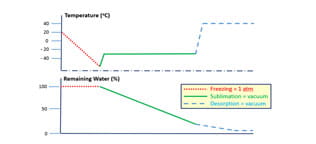Evaluation and Comparison of Protein Adsorption and Cellular Activities in Cyclic Olefin Polymer Container Systems for Drug Delivery and Cell-Based Applications
Manfai Lee, PhD1, George M Rodgers, MD, PhD1, Randy Y Adachi, PhD2
1Division of Hematology and Hematologic Malignancies, University of Utah Health Sciences Center, Salt Lake City, UT 2West Pharmaceutical Services, Inc., Scottsdale, AZ
![]()
Purpose
The purpose of this study was to evaluate protein adsorption to Daikyo Crystal Zenith® (CZ; cyclic olefin polymer) plastic vials and to compare the results with commercially available glass and polypropylene vials; to measure protein activity recovered after storage in vials; and to evaluate cell viability cultured in CZ container systems. This information will be useful to assess the suitability of CZ containers in protein-based and cell-based applications.
Methods
ADAMTS13 (20μg/mL), as a labile model protein, was stored in 1) 0.5mL CZ vials, 2) 0.3mL borosilicate glass vials, 3) 0.5mL polypropylene (PP) cryogenic vials, 4) 0.5 mL PP low-retention microcentrifuge tubes, and 5) 0.5 mL PP traditional microcentrifuge tubes at -70°C. After one and four months of storage, protein recovery was quantified using an ELISA assay. To measure ADAMTS13 enzymatic activity, 25μL of vWF (200μg/mL) (a specific substrate for ADAMTS13) was mixed with 25μL of ADAMTS13 (20μg/mL) and incubated at 37°C for two hours. The cleavage of vWF by ADAMTS13 was analyzed by SDS-PAGE. The adsorption of ADAMTS13 to the storage vials was measured by staining with either Coomassie Brilliant Blue G-250 or colloidal gold. Human umbilical vein endothelial cells (HUVECs) and LN229 glioblastoma cells were cultured in CZ containers. Cell proliferation, viability, and migration were studied and compared with commonly used polystyrene (PS) containers using MTT, ELISA, and scratch wound assays.
Results
The amount of ADAMTS13 recovered from CZ vials was comparable to that from PP vials, and was significantly higher (~10%) than the recovery from glass vials. These results were in good agreement with protein staining, which indicated more ADAMTS13 adhered to the surface of glass vials than to plastic vials. Enzymatic studies indicated that ADAMTS13 stored in CZ containers remained active after four months of storage. Cells cultured in CZ containers exhibited 36% greater rate of proliferation and an increase in cell-migration as compared to the PS container. Conclusion: CZ plastic container systems made of cyclic olefin polymer are suitable for storing protein-based drugs and can be used for culturing and growing live cells.
Daikyo Crystal Zenith® is a registered trademark of Daikyo Seiko, Ltd.
Daikyo Crystal Zenith® technology is licensed from Daikyo Seiko, Ltd.










